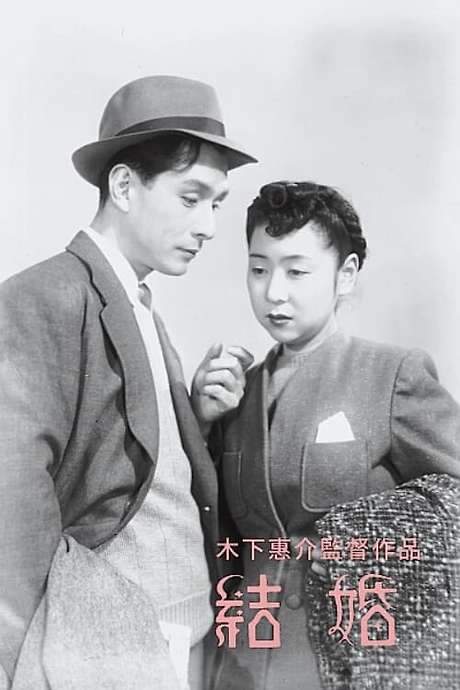Warning: spoilers below!
Haven’t seen Early Summer yet? This summary contains major spoilers. Bookmark the page, watch the movie, and come back for the full breakdown. If you're ready, scroll on and relive the story!
Early Summer (1951) – Full Plot Summary & Ending Explained
Read the complete plot breakdown of Early Summer (1951), including all key story events, major twists, and the ending explained in detail. Discover what really happened—and what it all means.
Noriko, a secretary in Tokyo, lives in Kamakura, Kanagawa with her extended Mamiya family: her parents, Chieko Higashiyama Shige Mamiya, and Ichirô Sugai Shūkichi Mamiya, her older brother Chishû Ryû Kōichi Mamiya, his wife Kuniko Miyake Fumiko Mamiya, and their two young sons Minoru Zen Murase and Isamu. The household is warm but quietly under pressure, as the arrival of an elderly uncle marks the moment when Noriko’s life is framed by expectations of marriage and stability.
At work, Noriko’s boss Satake weighs in with a practical proposal: he suggests a match with a forty-year-old friend of his, Mr. Manabe, a businessman and golfer. This idea collides with the playful opinions of her friends, who are split between those who are married and those who remain single. In the unmarried camp, Aya Tamura Chikage Awashima stands out as a close ally, helping to articulate what Noriko herself has begun to question: what does happiness look like when seen through the lens of family duty and personal choice?
A childhood friend, Kenkichi Yabe [Hiroshi Nihon’yanagi], a doctor and widower with a young daughter, visits Noriko for tea and offers a symbolic gift—a sheaf of wheat—from a brother who died in World War II. This gesture carries a weightier message about lineage, memory, and the possibility of new beginnings. When Yabe moves north to Akita, Noriko and Aya tease the rural accent, yet a deeper current pulls her toward the idea of joining Yabe and his mother, Tami Yabe [Haruko Sugimura], in their northern resettlement. Tami’s impulsive invitation to Noriko to marry Yabe presses Noriko to weigh a future far from city life, and the moment she shares her decision with her family, their quiet heartbreak becomes a defining undercurrent of the story.
The Mamiya family navigates this turning point with a restrained, almost ceremonial, grace. They hint at disappointment, yet they also begin to accept Noriko’s choice as something that sits within the broader arc of their lives. The family’s response is not one of open rebellion but of patient endurance, a shared understanding that a person’s happiness cannot be dictated by social timelines alone. In the days that follow, they reconcile with the shift, and they sit for a photograph that marks a quiet moment of unity before the next chapter begins.
As Noriko moves toward a life that includes Kenkichi Yabe, the parents come to terms with the idea that distance may become part of the family’s daily life. They relocate themselves to a rural region, choosing to be near Noriko’s elderly uncle while continuing to support her autonomy from afar. The final scenes crystallize the film’s themes: a bride gliding along a country road in her traditional costume, and a barley field ripening nearby, embodying both the slow passage of time and the enduring steadiness of the land that sustains this family.
This story unfolds with a gentle, observant gaze that honors the small, everyday decisions that ripple through generations. It treats duty and affection not as opposites but as two strands braided together, shaping how a Woman named Noriko—and the people who love her—navigate the delicate balance between tradition and personal happiness. Throughout, the film remains attentive to the quiet costs of choosing one path over another, while inviting the audience to witness the resilience that emerges when a family supports a loved one taking a meaningful, if uncertain, step forward.
Last Updated: October 09, 2025 at 12:31
Unlock the Full Story of Early Summer
Don't stop at just watching — explore Early Summer in full detail. From the complete plot summary and scene-by-scene timeline to character breakdowns, thematic analysis, and a deep dive into the ending — every page helps you truly understand what Early Summer is all about. Plus, discover what's next after the movie.
Early Summer Timeline
Track the full timeline of Early Summer with every major event arranged chronologically. Perfect for decoding non-linear storytelling, flashbacks, or parallel narratives with a clear scene-by-scene breakdown.

Similar Movies to Early Summer
Discover movies like Early Summer that share similar genres, themes, and storytelling elements. Whether you’re drawn to the atmosphere, character arcs, or plot structure, these curated recommendations will help you explore more films you’ll love.
Explore More About Movie Early Summer
Early Summer (1951) Scene-by-Scene Movie Timeline
Early Summer (1951) Movie Characters, Themes & Settings
Early Summer (1951) Spoiler-Free Summary & Key Flow
Movies Like Early Summer – Similar Titles You’ll Enjoy
Autumn in My Heart (1000) Spoiler-Packed Plot Recap
Summer Ends in Autumn (1981) Complete Plot Breakdown
Summer Strike (1000) Film Overview & Timeline
Late Autumn (1960) Film Overview & Timeline
The Member of the Wedding (1952) Full Movie Breakdown
Autumn Leaves (1956) Movie Recap & Themes
Summer with Monika (1953) Story Summary & Characters
Summer Interlude (1951) Movie Recap & Themes
Fireflies in the Garden (2008) Film Overview & Timeline
Marriage (1947) Movie Recap & Themes
A Summer Place (1959) Detailed Story Recap
Dear Summer Sister (1972) Full Movie Breakdown
Early Spring (1956) Complete Plot Breakdown
Summer Days (2022) Film Overview & Timeline
Late Spring (1949) Movie Recap & Themes


















